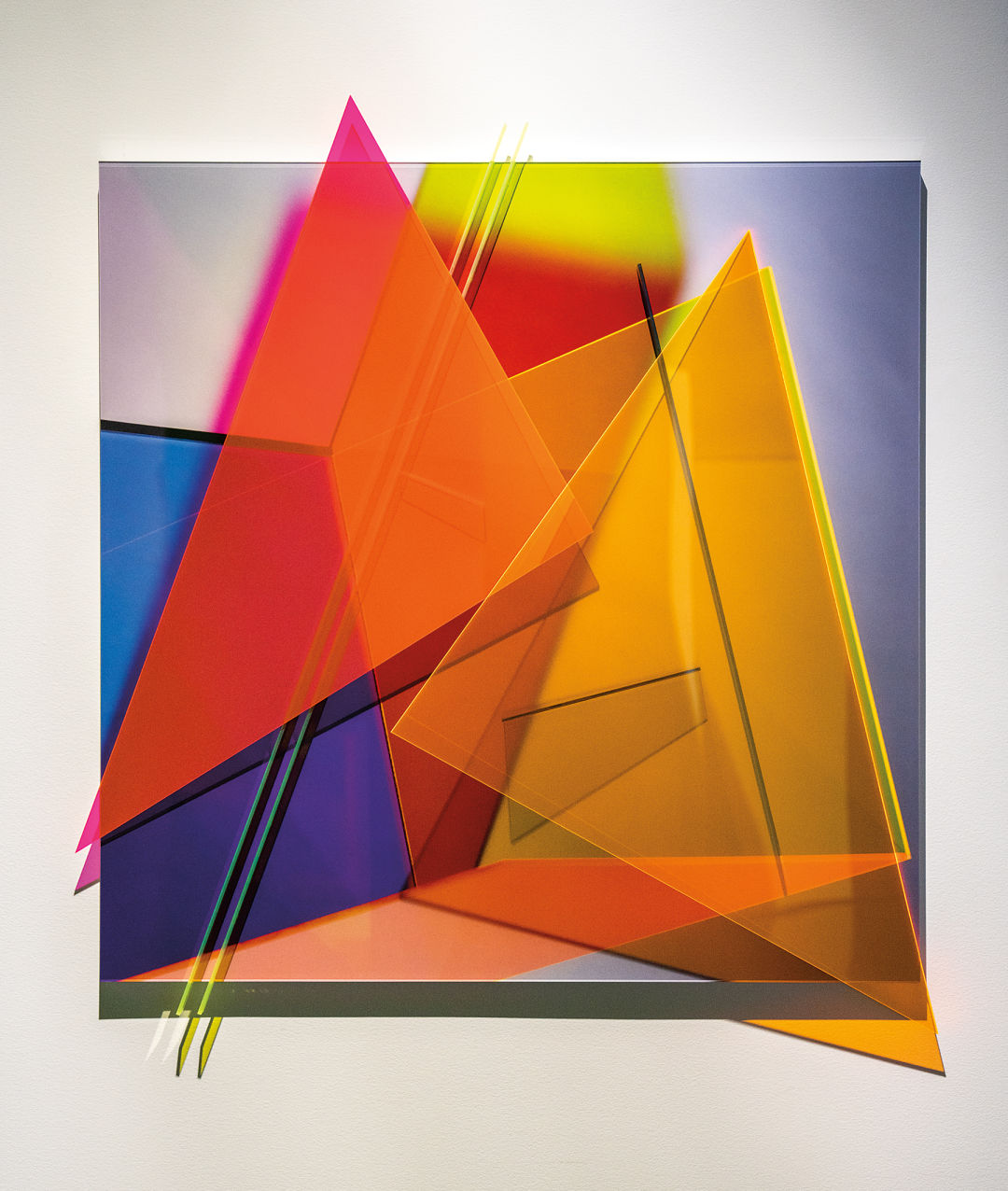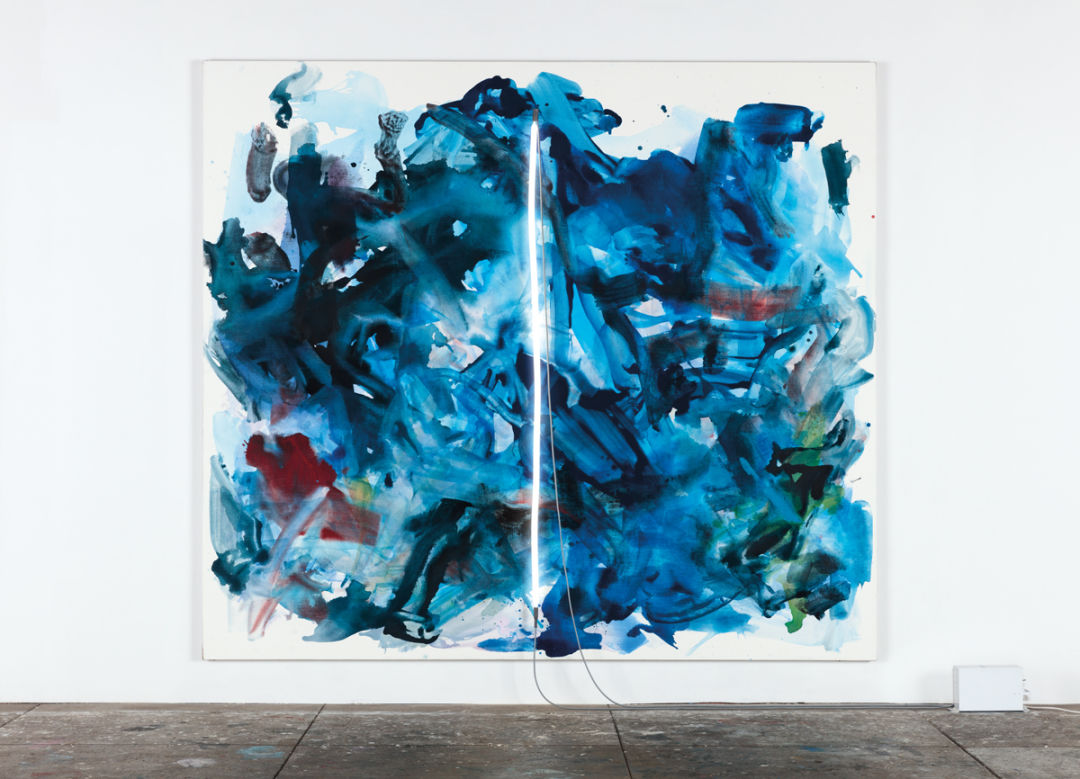It’s a Different Era at the Aspen Art Museum

Installation view: Barbara Kasten
Progression Seventeen
Digital chromogenic print, fluorescent acrylic
56 x 56 x 7½ in (142 x 142 x 19 cm)
Image: Courtesy Aspen Art Museum
Earlier this year, the Aspen Art Museum (AAM) marked the onset of its latest era as the first new director in 15 years, Nicola Lees, took the helm.
With extensive experience managing nonprofit exhibition spaces for contemporary art abroad and in New York, Lees has a vision for the museum that includes inspiration from Aspen’s rich history, site-specific programming, collaboration, and education.
“For a small town, the lure of Aspen as an artist’s draw and a center for creativity was once huge,” says the London-born Lees. “The AAM space gives us the opportunity to represent multiple voices from diverse backgrounds, including those whose complex practices have stood outside dominant narratives around contemporary art. We are offering a new way for museumgoers to engage with the space while supporting flexible, long-term engagements with artists.”
Though some of them were already being developed before Lees arrived, nearly all of the upcoming shows contribute in some way to her focus. Barbara Kasten’s Scenarios (through April 4, 2021 ) combines photography, sculpture, and video, including a sculptural installation created especially for the museum. Influenced by the Bauhaus, Kasten’s work particularly resonates with Aspen’s connection to German artist Herbert Bayer, who worked on numerous architectural, planning, and design projects here from the 1940s until the mid-’70s.
An exhibition by Los Angeles–based painter Mary Weatherford (through May 2, 2021 ), who is known for incorporating a variety of idiosyncratic subject matter and techniques, centers around the artist’s innovative neon painting series, which merges thick, swooping fields of Flashe (vinyl) paint with illuminated fluorescent tubing.

Mary Weatherford, the Tempest, 2015. Flashe and neon on linen.
Image: Courtesy Aspen Art Museum
This season a serious rethink of the flow through the museum’s galleries is showcased in Winterfest: An Exhibition of Arts and Crafts (through February 21, 2021 ) and in a new museum store concept. The exhibit takes its cue from the German tradition of Jahresgaben, which are annual selling exhibitions in support of artists and institutional programs. In Aspen, handmade artworks by more than 20 artists—including Basalt’s Richard Carter—are displayed within a site-specific, immersive installation designed by artist Veit Laurent Kurz and inspired by traditional Alpine landscapes and architecture. All of the works are for sale, with proceeds split between the museum and the artists.
Meanwhile, AAM’s shop has been reconceived by American artist Jonathan Berger as an exhibition/social space/place of commerce with more than 350 objects for sale (free to $50,000). The eclectic selection ranges from new to antique and includes drawings, fragrances (NYC-based Enfleurage created a custom line of essential oils), novelty toys, jewelry, textiles, household objects, and more, as well as folk art and contemporary art. Ceramics from the Carbondale Clay Center and textiles from Mountain Valley Weavers in Glenwood Springs add some local flavor to the mix of items.
Next summer, museumgoers can look forward to AAM’s transformed rooftop garden, the brainchild of poet and visual artist Precious Okoyomon. The two-year project will exemplify Aspen’s ethos of mind, body, and spirit and honor the town’s geography, climate, and topography, as well as the museum’s unique architecture. Okoyomon will work with local growers to plant a season-specific, multisensory plot that will be enlivened by a program of events to constitute a “Garden of Earthly Delights”—a continuously morphing project that will change throughout the year.
In all, the reimagined AAM promises to be a bridge between the past and the future, between art and craft, and between artists and community. The best part? All of us are invited across. Closed Mondays. Admission is free, but at press time only 50 visitors at a time were allowed; assure entry by reserving a time online. 637 E Hyman Ave, aspenartmuseum.org













































